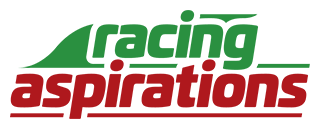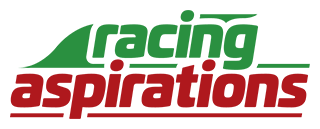What is Scrub Radius
The scrub radius is the distance in the front view between the point at which the kingpin would intersect with the ground and the center of the contact patch of the wheel where it intersects with the ground. The main effect of this is to introduce a turning moment.
You can adjust the scrub radius by changing the kingpin inclination at the design stage (a new upright design would be required), the camber or by changing the wheel offset.
Positive scrub
 On a rear-wheel-drive vehicle with positive scrub radius, the vehicle’s forward motion and the friction between the tyre and the road causes a force which tends to move the front wheels back (toe-out), keeping the vehicle heading straight ahead. During braking, on any type of drive, if braking effort is greater on one side of the vehicle than the other, positive scrub radius will cause the vehicle to veer towards the side with the greater effort. It therefore requires much higher driver involvement and also competence.
On a rear-wheel-drive vehicle with positive scrub radius, the vehicle’s forward motion and the friction between the tyre and the road causes a force which tends to move the front wheels back (toe-out), keeping the vehicle heading straight ahead. During braking, on any type of drive, if braking effort is greater on one side of the vehicle than the other, positive scrub radius will cause the vehicle to veer towards the side with the greater effort. It therefore requires much higher driver involvement and also competence.Zero scrub
 Keeping the scrub radius small will make the car easier to handle at low speeds. It also reduces the risk, that a loss of traction on one front wheel during braking, will cause the car to change direction. If the scrub radius is small then the contact patch is spun in place when parking, which takes a lot more effort. The advantage of a small scrub radius is that the steering becomes less sensitive to braking inputs. However, zero scrub radius, under hard braking, causes the suspension to be skittish because varying road conditions created varying amounts of torque (both positive and negative) around the steering axis. Therefore, some amount of scrub radius, positive or negative, is preferred. Having a small amount of scrub radius, under hard braking, generates a small amount of torque to a predictable side. While this torque isn’t desirable, it’s predictable and not majorly by changes in road conditions, which makes the steering smooth.
Keeping the scrub radius small will make the car easier to handle at low speeds. It also reduces the risk, that a loss of traction on one front wheel during braking, will cause the car to change direction. If the scrub radius is small then the contact patch is spun in place when parking, which takes a lot more effort. The advantage of a small scrub radius is that the steering becomes less sensitive to braking inputs. However, zero scrub radius, under hard braking, causes the suspension to be skittish because varying road conditions created varying amounts of torque (both positive and negative) around the steering axis. Therefore, some amount of scrub radius, positive or negative, is preferred. Having a small amount of scrub radius, under hard braking, generates a small amount of torque to a predictable side. While this torque isn’t desirable, it’s predictable and not majorly by changes in road conditions, which makes the steering smooth.Negative scrub
 An advantage of a negative scrub radius is that the geometry naturally compensates for split braking, or failure in one of the brake circuits. Vehicles with a diagonal-split brake system have negative scrub radius built into the steering geometry. If one half of the brake system fails, then the vehicle will tend to pull up in a straight line. Negative scrub radius also provides centre point steering in the event of a tyre deflation, which provides greater stability and steering control in this emergency situation. If you hit standing water at speed on one side of the car, with negative scrub radius the torque on the steering will steer you away from the puddle. Which balances the effect of drag on one side of the car.
An advantage of a negative scrub radius is that the geometry naturally compensates for split braking, or failure in one of the brake circuits. Vehicles with a diagonal-split brake system have negative scrub radius built into the steering geometry. If one half of the brake system fails, then the vehicle will tend to pull up in a straight line. Negative scrub radius also provides centre point steering in the event of a tyre deflation, which provides greater stability and steering control in this emergency situation. If you hit standing water at speed on one side of the car, with negative scrub radius the torque on the steering will steer you away from the puddle. Which balances the effect of drag on one side of the car.
Dynamic Scrub Radius

In order to calculate the dynamic scrub radius the contact patch for the tire needs to be calculated based on a number of factors. Do your calculations take this into account? The racing aspirations calculators do.
- Open the Macpherson Geometry Calculator or the Suspension Geometry Calculator
- Click
 so it becomes
so it becomes  if it isn’t already.
if it isn’t already. - The dynamic scrub radius is displayed below the camber read out.
Reporting

Scrub radius and tires contact patch width metrics exist within reporting.
- Open the Macpherson Geometry Calculator or the Suspension Geometry Calculator
- Click
 so it becomes
so it becomes  if it isn’t already.
if it isn’t already. - Scroll down and select “Scrub Radius Left“, “Scrub Radius Right“, “Tire Contact Patch Width Left” and/or “Tire Contact Patch Width Right“
- Click Apply
Subscribe

to the Suspension Geometry Calculator |
| | 
to the MacPherson Geometry Calculator |






